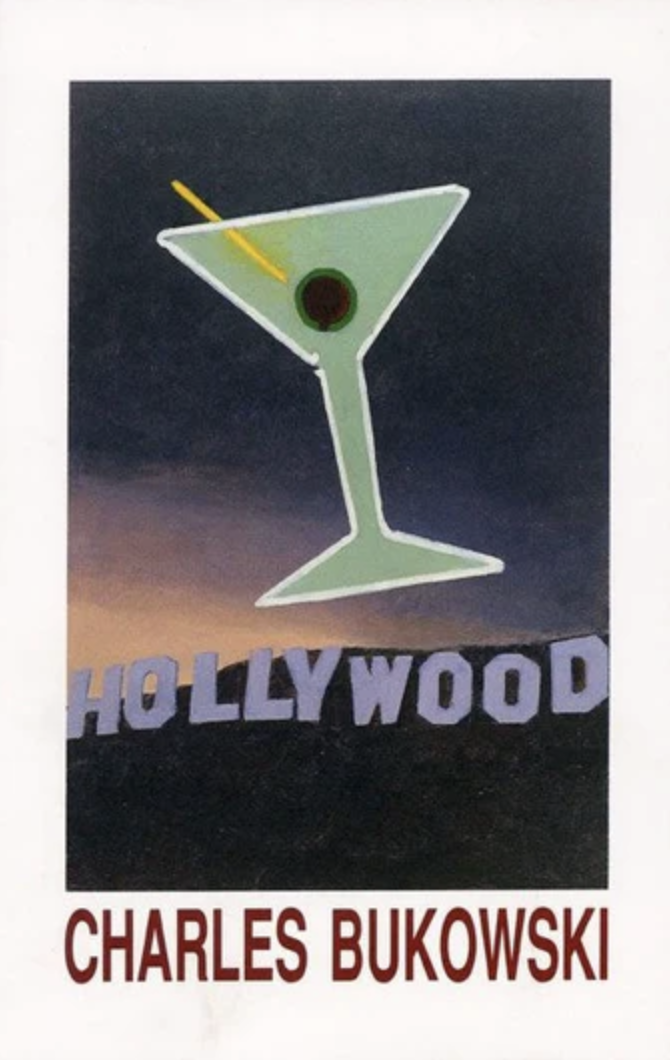Charles Bukowski’s Ordinary Madness

Image by Brady Bellini.
I received a review of Charles Bukowski’s Hollywood for AMASS Magazine (formerly Enclitic) as we were finalizing the current issue. We wanted to include it, but it was riddled with problems. I tried to salvage it, extracting a few of its good points, but it was hopeless. And the author had no interest in being associated with it, so I polished it off with a new moniker. A year later I received a letter from a New York publisher asking for permission to reprint it in an anthology and for a substantial fee.
After a year or so I got a letter from Hank (the name Bukowski went by. His full name was Henry Charles Bukowski). He praised the review, claiming that I saw the world like he did, and asked if I could interview him. He also included a stack of poems with a self-addressed envelope, asking if we would be interested in publishing them, which we did in the next few issues. I was honored, of course, to be able to interview him, and we set up a tentative date to meet in San Pedro. Before we could make this happen, he passed. 
I had already begun to consume his works in preparation for the meeting, especially since I had never read Hollywood. After his passing, I scoured his works and eventually penned a few essays about them, mostly letting my memory of him fade until I bought a house in San Pedro in 2006, leaving Venice after many years, my choice greatly influenced by Hank’s fascination with this working-class city. Once here, I revived my interest and prepared to write a piece about Hank’s experience in San Pedro’s dive bars, titled “Joints.”
At that point I knew Hank almost exclusively through his novels—I had not read much of his poetry. As a result, my interview with him would have been limited. Since then I’ve read a few posthumously published collections, but it wasn’t until the publication of A Catalog of Ordinary Madness (Chatwin Books), by Abel Debritto, an 854 page bio-bibliography of his works, that I realized how much of his output I’ve missed. This masterful book documents, in chronological order, his complete works—primary publications, periodicals, plates, book contributions and anthologies, pirate publications, unfinished projects, and non-English appearances. One of the striking aspects of this section is the comments appended to many of the entries for the periodicals, special experiences or praises an editor had when dealing with Hank. This includes my experience with Hank, summarized above, when we published one batch of his poems. The last part of the book includes writing about his works in books and chapbooks, master’s theses, doctoral dissertations, and periodicals. This output was immense, almost 5,500 poems, over 500 short stories and columns, hundreds of letters, essays, journal entries, illustrations, and six novels.
Debritto’s research regimen is notable. He spent many years in libraries, poring over microfilm and seeking out obscure magazines and journals. He talked to and sometimes met many of the editors who published Hank’s work decades ago. This was a very rewarding experience for him: “Although they were no longer in their prime, they shared all kind of stories—some truly revealing—with the eagerness of a teenager who has just discovered the magic of literature. Opinionated for the most part, they all seemed to believe Bukowski had played a key role in the small press scene—and to think they were not in it for the money speaks volumes of their commitment to art for art’s sake. No wonder Bukowski never stopped submitting to them.”
The small press scene was a significant cultural event during the stretch of years that Hank made his reputation. His writings appeared in so many different and little-known venues, at least up until his identity was mainstreamed, especially after the appearance of the movie Barfly in the late 1980s. Like Blank Gun Silencer, Sixpack, Make Room for Dada, Laugh Literary and Man the Humping Guns, etc.
Debritto’s reconstruction of this small press world is laudable for reasons that go well beyond the documentation of Hank’s output. It dredges up an era, beginning with the Beats and maturing through the 1960s and beyond, where the alternative press truly thrived. The sheer diversity and volume of work produced outside the corporate model constituted the cultural revolution of this stretch of years, the explosion of rebellion and experimentation outside the status quo. His lifestyle and perspective on writing attest to the consequences of this heritage, but they also demonstrate his unique place in it. He wrote through these years with the love of his craft, beholden to no tradition or movement, molding his own style to dismantle it. In the words of S.A. Griffin, a major Southern California poet, he was a “one-man wrecking crew and revolution.”
No comments:
Post a Comment